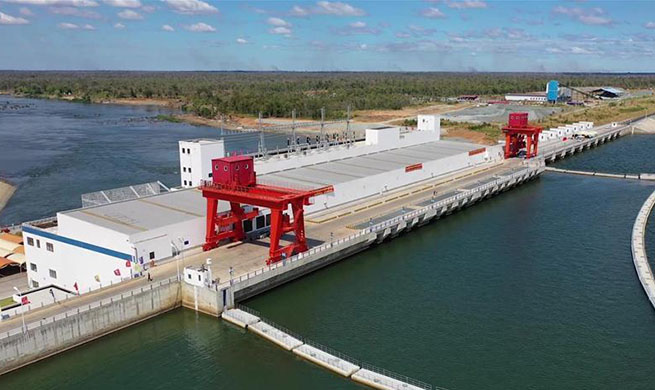NEW YORK, Dec. 19 (Xinhua) -- The U.S. dollar dipped in late trading on Wednesday, as the Federal Reserves raised interest rates by a quarter point, paring some of the sharp losses of the greenback in the previous sessions.
Following the Fed's decision to raise its benchmark overnight lending rate, the greenback extended gains but still settled at a weaker level against a basket of other major currencies.
The U.S. central bank raised the federal funds rate target to a range of 2.25 percent to 2.5 percent, higher than the 2-2.25 percent range stated in November.
The move incurred a dramatic sell-off in stocks and a fall in yields of long-dated U.S. Treasury bonds, due to grave concerns over a potential slowdown in economic growth.
Yet such worries were eased to some extent, as the Fed reduced the forecast numbers of rate hikes in 2019 to two from three stated in September, and projected only one hike in 2020, signaling a slower pace of its monetary tightening.
In its policy statement, the Federal Open Market Committee judged that risks to economic outlook "are roughly balanced," but stressed they "will continue to monitor global economic and financial developments and assess their implications for the economic outlook."
The Fed's fourth rate hike defied U.S. President Donald Trump's repeated rebuke against the Fed and its Chairman Jerome Powell. Trump had warned Fed not to make "yet another mistake" and not to cause the market "any more illiquid than it already is" in a Tuesday tweet.
Powell stressed Fed's independence and denied political considerations had weighed the central bank's decision-making during a press conference following the two-day policy meeting.
Beating the dollar's advance, the euro got stronger boosted by a deal reached between Italy and the European Commission over the country's big-spending budget plan for next year, bringing an end to weeks of deadlock regarding revisions to the plan.
The European Commission confirmed on Wednesday that Rome would lower its deficit target for 2019 from the original high of 2.4 percent to a moderately 2.04 percent.
In late New York trading, the euro rose to 1.1371 dollars from 1.1355 dollars in the previous session, and the British pound fell to 1.2622 dollars from 1.2638 U.S. dollars in the previous session. The Australian dollar was down to 0.7114 dollar from 0.7171 dollar.
The U.S. dollar bought 112.35 Japanese yen, lower than 112.53 Japanese yen of the previous session. The U.S. dollar was up to 0.9942 Swiss franc from 0.9928 Swiss franc, and it increased to 1.3494 Canadian dollars from 1.3492 Canadian dollars.













